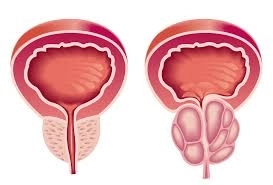
Laser Prostatectomy: The Modern Solution for Prostate Enlargement
Published on: 2025-06-17 | Written by: Dr. Ahmed Desouky El Safi, Ph.D., Consultant of Kidney and Urinary Tract Laparoscopic Surgery
Benign Prostatic Hyperplasia (BPH) is one of the most common conditions affecting men over the age of 40, and the incidence increases with age. Although this condition is non-cancerous, it often causes troublesome symptoms that significantly impact quality of life, such as difficulty urinating, frequent nighttime urination, and the feeling of incomplete bladder emptying.
With advances in medical technology, laser prostatectomy has become one of the safest and most effective options for treatment, offering a minimally invasive alternative to traditional surgery.
What is Benign Prostatic Hyperplasia?
It is a non-cancerous enlargement of the prostate gland that compresses the urethra and impairs urinary flow.
Common symptoms include:
-
Weak or slow urine stream
-
Frequent urination, especially at night
-
Difficulty starting urination
-
Urinary retention
-
A constant feeling of incomplete bladder emptying
When is Surgical Intervention Required?
Surgery is recommended when:
-
Medications fail to provide relief
-
The condition leads to obstruction or urinary retention
-
Recurrent urinary tract infections or hematuria (blood in urine) occur
-
Complications develop in the bladder or kidneys
What is Laser Prostatectomy?
Laser prostatectomy is a medical procedure that uses advanced laser technology, such as Holmium Laser Enucleation of the Prostate (HoLEP), to precisely remove the enlarged prostate tissue without the need for surgical incisions.
A scope is inserted through the urethra, and the laser is used to extract the excess tissue, relieving pressure and improving urine flow.
Benefits of Laser Prostatectomy:
-
Minimally invasive with significantly reduced bleeding
-
Short hospital stay (usually within 24 hours)
-
Rapid recovery and quick return to normal activities
-
Safe for elderly patients and those with heart conditions or on blood thinners
-
No external incisions or surgical cuts
-
Low complication rates with high success outcomes
Conclusion:
Laser prostatectomy is an ideal solution for men suffering from prostate enlargement who wish to avoid traditional surgery. This modern technique offers comfort, precision, and faster recovery with minimal risks.
If you experience symptoms of prostate enlargement, consult your urologist to determine the most appropriate treatment option for your condition.

